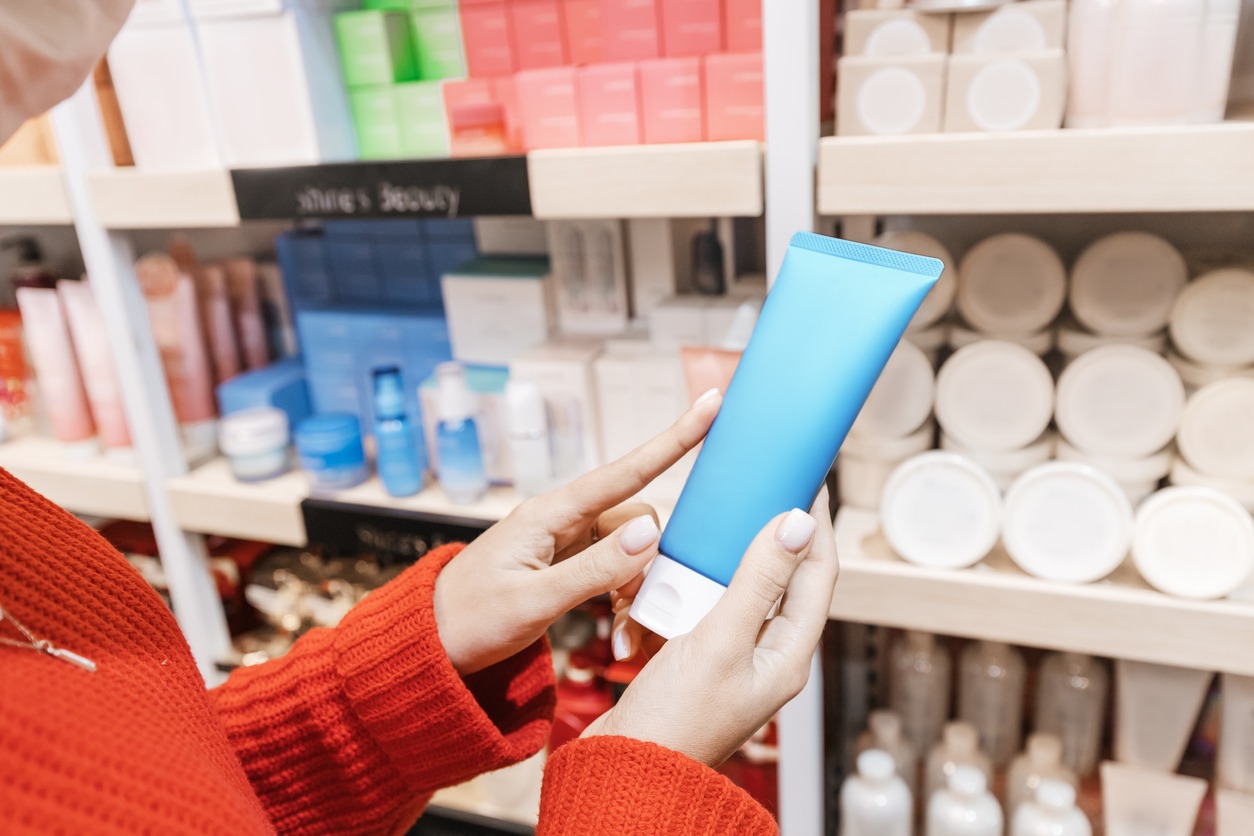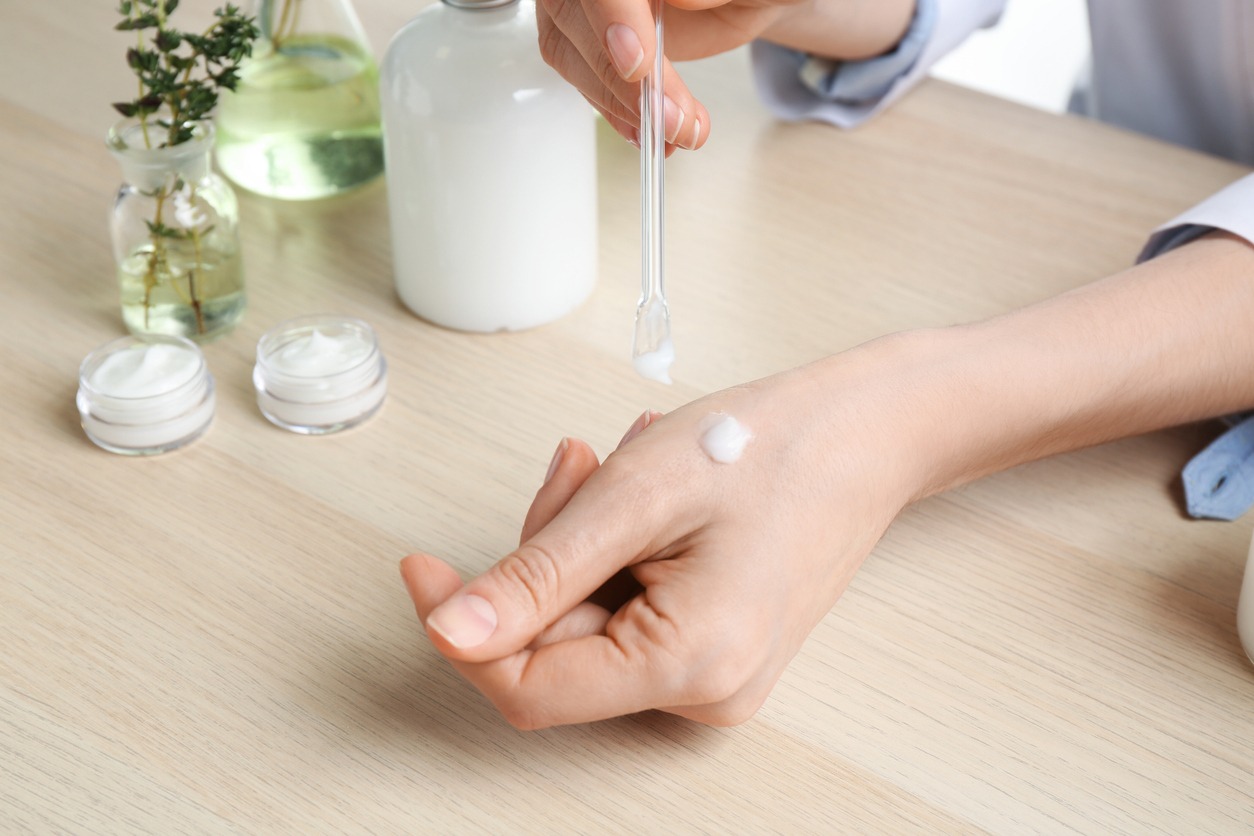When you visit beauty stores or browse online, you will be able to find lots of different body lotions, which can make it overwhelming for some to find the right one that day can use every day. But it is more challenging to find the right lotion for those who have sensitive skin or those suffering from allergies and other skin problems. Many people are sensitive to fragrance, which most body lotions have. If you are among them, then choosing to use hypoallergenic lotions might be what you need in order to keep your skin healthy and moisturized without experiencing allergic reactions.
Lotions that are labeled hypoallergenic claim that they cause fewer allergic reactions in contrast with other types of lotions. One of the common skin reactions that people experience when using lotions is cosmetic contact dermatitis. It is a condition where the skin becomes hypersensitive to one or most specific allergens that are present in the cosmetics used.
If you usually experience allergic reactions when using lotions, maybe it is time for you to change the product you are using and pick a hypoallergenic one instead. To further understand what these products are, read on as we’re giving you a guide to hypoallergenic lotions.
What Does “Hypoallergenic” Mean?
There are a lot of undefined standards in the world of cosmetics, and “hypoallergenic” is among them. Did you know that the FDA does not control or describe how the term “hypoallergenic” is used in the cosmetics industry? Therefore, the use of the term technically falls under the category of a marketing claim. This means that each brand has the independence to determine what the term means in the context of its products.[1]
In order to indicate that a product has fewer components that are known to induce an allergic reaction, the majority of manufacturers use the word “hypoallergenic.” Given a large number of recognized allergies and the lack of a single, overarching criterion for defining which components qualify as “known allergens,” the word “fewer” is stressed. This only means that it is impossible that a certain lotion will not cause an allergic reaction in 100% of its users.[1]
Are All Hypoallergenic Lotions Safe?
Whenever we see lotions and other products in stores that are labeled “hypoallergenic,” most of us think that they are safer to use compared to those that are not labeled as such. However, based on experts, not all hypoallergenic lotions are safe. It’s because there is no way for a consumer to be absolutely sure that a product labeled as such will not cause any allergic reaction.[1]
The truth is that many substances and compounds are known to cause allergies in some people. It is, therefore, impossible to guarantee that none of the millions of potential customers who might buy a particular product have an allergy to something in the formula. One of the best ways to protect yourself from an allergic reaction is to determine first what ingredients you are allergic to or sensitive to before using any type of lotion. And, of course, always check the list of ingredients to ensure that all of them are safe for your skin.[1]
Common Skincare Ingredients That Cause Allergic Reactions
It can be difficult to determine which components in skincare products are frequently possible allergens because allergies are personal. You can think of it like a food allergy. There are people who are allergic to peanuts. However, it does not mean that other people should also stop eating them. This goes for skincare ingredients as well.[1]
That is why it is very important to identify first if you have allergies to certain foods, botanicals, plants, and other natural ingredients that you may be exposed to through foods and other environmental conditions. It’s because ingredients that are associated with these known allergies are very easy to identify on the ingredient panel of a cosmetic product like lotions.
Aside from allergens being personal, there are also a few red flags that you need to look out for in the formulations of lotions. Try to pay attention to the fragrances and preservatives that the lotion contains.[1]
MedPageToday has studied 174 best-selling lotions, and they found out that the following are the most common potential allergens those products contain:[2]
- Fragrance mix
- Paraben mix
- Tocopherol (DL-a-tocopherol)
- Phenoxyethanol
- Formaldehyde releasers
- Propylene glycol
- Benzyl alcohol
- Iodopropynyl butylcarbamate
- Cocamide diethanolamine
- Methylisothiazolinone
- Compositae mix
- Lanolin
- Lavandula angustifolia oil
- Ethyl acrylate
- Benzophenone-3
- D-Limonene
- Melaleuca alternifolia
Based on another study they have conducted, the following are the top most reviewed products that do not contain the ingredients listed above:[2]
- Better Shea Butter
- Aveeno Eczema Therapy Moisturizing Cream
- Molivera Organics Ivory Shea Butter
In a lot of cases, a person is not sensitive to all fragrances but a certain subcategory of chemicals. If a brand does not list these allergens, there is no way to know which potential fragrance allergens are in the product. Therefore, if you know that you are sensitive to fragrance, it is best to steer clear of the product altogether.[1]
Also, note that you could also develop a new allergy at any point. Therefore, just because you have used a product without any issues for years does not mean it is not the culprit when trying to determine what is causing your allergy or rash.[1]
Common Type of Allergic Reactions Caused by Lotions
As we’ve mentioned earlier, cosmetic contact dermatitis (CCD) is the most common allergic reaction to a cosmetic product like lotions. When this occurs, the epidermis of the skin has a hypersensitivity to a chemical or ingredient in a cosmetic product, which causes a reaction, such as burning, a rash, irritation, hives, and other inflammatory response.[1] When you have an allergic reaction to a certain type of lotion, a red, itchy rash usually develops in the areas to that you applied the product.
Things to Consider When Choosing a Lotion
Body lotions can certainly help in making your skin look and feel its best, especially when you have dry, sensitive skin. But how will you be able to know which of the many products available is the best? To help you, below are different tips on choosing the right body lotion for you:
Determine Your Skin Type
When choosing a lotion, whether it is hypoallergenic or not, it is best to determine your skin type first. Below are the most common skin types and the best types of lotion for each of them:[3]
- Dry Skin: If you have dry skin, it is best to opt for heavy-body lotions that contain ingredients that will keep the skin hydrated. These include lanolin, petrolatum, hyaluronic acid, urea, and dimethicone.
- Oily Skin: If your skin is oily, try to find lotions that are light and oil-free. You should also avoid those that contain ingredients that may clog the pores.
- Sensitive Skin: For those with sensitive skin, it is essential to find lotions that are fragrance-free and hypoallergenic with few ingredients. It’s because when the lotion contains more ingredients, it also means more chances for a factor that may irritate your skin.
- Mature Skin: If your skin is aging, you can try using products that contain anti-aging ingredients.
If you are unsure of what skin type you have, you can visit your dermatologist for an evaluation. For instance, people who have skin conditions like eczema may benefit from using an ointment instead of hypoallergenic lotions.[3]
Look for Antioxidants
It is also best to find lotions that contain antioxidants, as these can help promote new skin cell growth. These include ingredients like chamomile, pomegranate, green tea, and licorice root extract. Also, ensure that these ingredients are not low on the list, as the farther down they appear, the less effective they are likely to be.[3]
Pick Lotions with Sun Protection
The number one cause of premature aging is the sun. In fact, even when you can’t feel the rays of the sun on your skin, the ultraviolet rays still break down your skin cells and increases your risk of developing skin cancer. Therefore, when choosing a lotion, try to look for those that contain sun protection factors (SPF).[3]
Rule Out Useless Ingredients
This is where hypoallergenic lotions may come in handy, as they do not contain many ingredients. Keep in mind that not all ingredients that sound like they may help the skin become healthy are good.
For instance, based on research, lotions that are collagen-enriched don’t actually do a better job compared to lotions without collagen when it comes to making the skin smoother. The collagen produced by the body plays a key role in the health and appearance of the skin. However, the collagen ingredients found in over-the-counter lotions are unable to penetrate the skin.[3]
How to Test a New Lotion
If you are going to use a new lotion, even if it is labeled “hypoallergenic,” it is still important to test it first and see if you will develop any allergies. You can conduct a personal patch test at home for a new product before using it all over your face or body. What you can do is try testing a small amount of lotion on the inside of your wrist or in the crease of your elbow. After that, check the area after 24 or 48 hours and see if there are any adverse reactions, such as itching, chronic burning, and bumps.
You can also try doing this test with multiple products. Over time, you’ll be able to begin looking for patterns of certain ingredients that are in these products that may possibly be the culprit of the allergic reactions.[1]
Conclusion
Lotions that are labeled hypoallergenic are possibly safer to be used on many different skin types. However, this does not mean that they are safe and won’t cause any allergic reaction in all people. Generally, these products only contain fewer ingredients that commonly cause allergies in the majority of people. Therefore, before you use a hypoallergenic lotion or even other types of lotions, it is essential to determine first whether you are allergic to certain ingredients or not.
Always remember that just because a certain lotion is labeled hypoallergenic does not mean it will not cause any skin reaction to all skin types. If you struggle with compromised, sensitive skin, there are two things that you can do. The first one is to consult a dermatologist in order to understand your skin condition better and create a more tailored skincare routine. The second one is to begin paying attention to the ingredients that your lotions contain. This way, you will be familiar with what ingredients might be fine for your skin and which ones might not.[1]
Also, keep in mind that everyone’s skin triggers are unique. Therefore, it is important to understand exactly which ones are causing you allergies. We hope this post helped you learn more about hypoallergenic lotions.
If you need more tips and recommendations for keeping your skin moisturized, you may also read our Guide to Selecting Moisturizing Solutions for Your Skin.
References
[1] Shunatona, B. (2022, April 19). What hypoallergenic really means in skincare and cosmetics. Byrdie. Retrieved January 3, 2023, from https://www.byrdie.com/hypoallergenic-skincare-5076261
[2] Kronemyer, B. (2017, December 10). Allergens common in ‘hypoallergenic’ moisturizers. Medical News. Retrieved January 3, 2023, from https://www.medpagetoday.com/dermatology/generaldermatology/69770
[3] Manhattan Dermatology, E. (2022). Tips on choosing a lotion. Tips on Choosing a Lotion: Manhattan Dermatology: General, Surgical, & Cosmetic Dermatology. Retrieved January 3, 2023, from https://www.dermatologistnewyork.org/blog/tips-on-choosing-a-lotion





